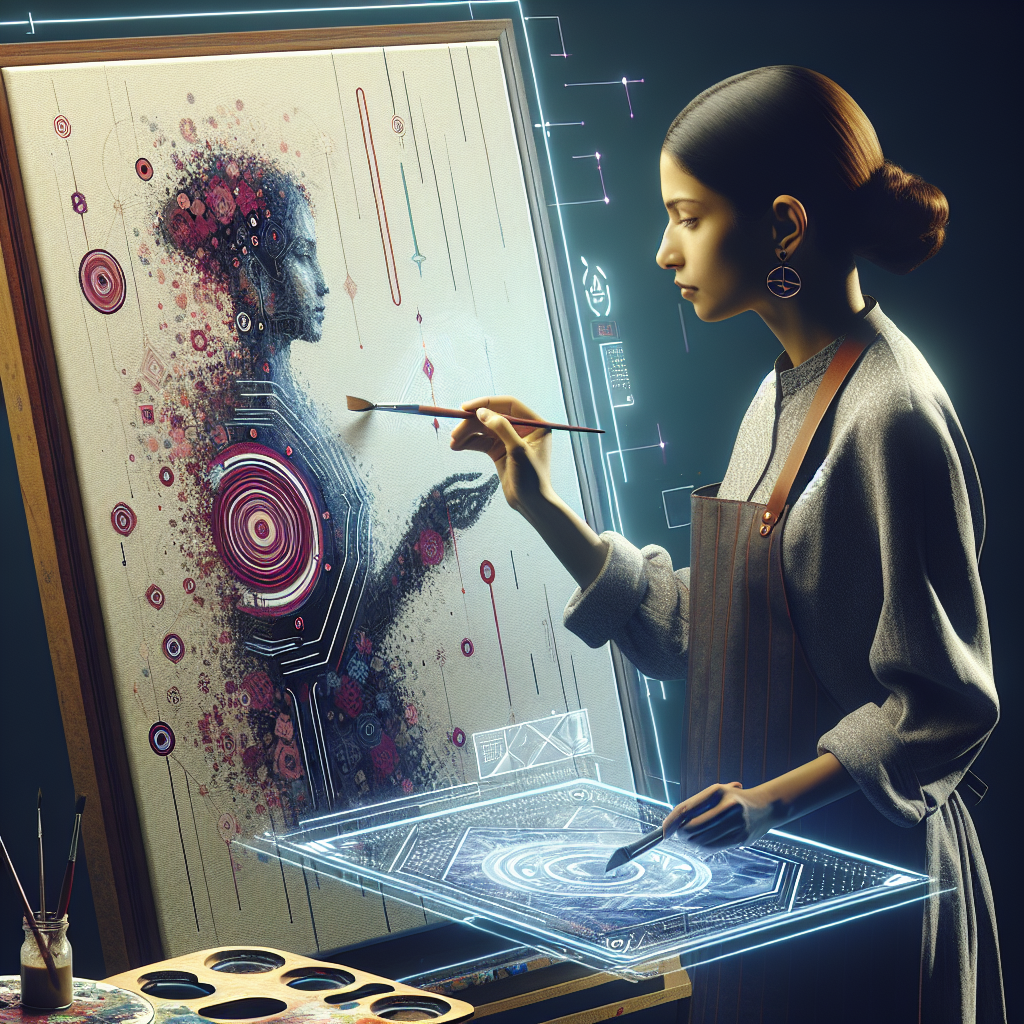Generative AI: Empowering Artists to Explore New Mediums
Artificial Intelligence (AI) has rapidly advanced in recent years, opening up new possibilities for artists to create in ways that were previously unimaginable. One area of AI that has particularly sparked the interest of artists is Generative AI, a form of AI that can create new content based on patterns and examples fed into it. This technology has the potential to revolutionize the way artists work, allowing them to explore new mediums and push the boundaries of their creativity.
Generative AI works by analyzing a large dataset of examples provided by the artist, such as images, text, or music, and using this data to generate new content that is similar in style and form. This process is made possible by algorithms that learn patterns and structures from the input data and can then generate new content that fits within these patterns. This allows artists to experiment with new ideas and styles, creating works that they may not have been able to come up with on their own.
One of the key benefits of Generative AI for artists is the ability to quickly generate a large amount of content, allowing them to explore different variations and possibilities in their work. This can be particularly useful for artists who work in time-sensitive mediums, such as film or music production, where deadlines are tight and creativity needs to flow quickly. By using Generative AI, artists can generate multiple versions of a piece of work and choose the one that best fits their vision, saving time and resources in the process.
Generative AI also empowers artists to explore new mediums and techniques that they may not have had experience with before. For example, a painter could use Generative AI to create digital artwork based on their traditional paintings, allowing them to experiment with new tools and styles in a digital format. Similarly, a musician could use Generative AI to create new melodies and harmonies based on their existing compositions, opening up new possibilities for their music.
In addition to helping artists explore new mediums, Generative AI can also be a valuable tool for collaboration. Artists can use Generative AI to generate content that can then be further developed and refined by other artists, leading to innovative and unique collaborations. This can be particularly useful in fields such as fashion design, where different artists can work together to create new collections based on generative designs.
Despite its potential benefits, Generative AI also raises questions and concerns for artists. Some may worry that using AI to create art could diminish the value of their work, as it may be seen as less authentic or original. Others may be concerned about the ethical implications of using AI to generate content, as it raises questions about authorship and ownership of the work.
To address these concerns, it is important for artists to approach Generative AI with a critical eye and to use it as a tool to enhance, rather than replace, their creativity. By using Generative AI as a tool for exploration and experimentation, artists can push the boundaries of their work and create new and exciting pieces that would not have been possible without AI.
In conclusion, Generative AI has the potential to empower artists to explore new mediums and push the boundaries of their creativity. By using AI as a tool for experimentation and collaboration, artists can create innovative and exciting works that challenge traditional notions of art and open up new possibilities for artistic expression.
FAQs
Q: Can Generative AI replace human creativity in art?
A: Generative AI can be a powerful tool for artists to explore new ideas and styles, but it should be seen as a complement to human creativity rather than a replacement. Artists can use Generative AI to generate content that can then be further developed and refined by their own creative vision, leading to unique and original works.
Q: How can artists ensure that their work created using Generative AI is original?
A: Artists can ensure that their work created using Generative AI is original by using the technology as a tool for exploration and experimentation, rather than relying solely on the generated content. By combining the output of Generative AI with their own creative input, artists can create works that are truly unique and authentic.
Q: Are there any ethical considerations when using Generative AI in art?
A: There are ethical considerations to be aware of when using Generative AI in art, particularly around issues of authorship and ownership of the work. Artists should be transparent about how AI is used in their creative process and ensure that proper credit is given to all collaborators involved in the creation of a piece of work.
Q: How can artists get started with using Generative AI in their work?
A: Artists can get started with using Generative AI in their work by exploring online resources and tutorials that provide guidance on how to use AI tools and platforms. There are also workshops and courses available that can help artists learn how to integrate AI into their creative process and experiment with new ideas and techniques.

